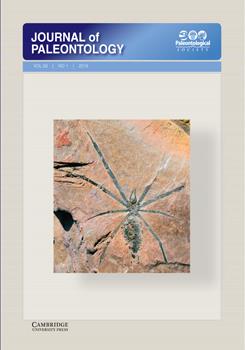Phosphatic sclerites of the problematic TarimspiraYue and Gao, 1992 (Cambrian Series 2) recovered by weak acid maceration of limestones display a unique range of mainly strongly coiled morphologies. They were likely organized into multielement scleritomes, but the nature of these is poorly known; some sclerites may have had a grasping function. Tarimspira sclerites grew by basal accretion in an analogous fashion to younger paraconodonts (Cambrian Series 3–4) but lack a basal cavity. Based on proposed homologies, Tarimspira may provide an extension of the early vertebrate paraconodont–euconodont clade back into the early Cambrian. Tarimspira is described for the first time from Laurentia (North Greenland), extending its known range from China and Siberia in Cambrian Series 2. In addition to the type species, Tarimspira planaYue and Gao, 1992, the Greenland record of Tarimspira includes two morphotypes of a new species, Tarimspira artemi.
How to translate text using browser tools
27 February 2019
Tarimspira from the Cambrian (Series 2, Stage 4) of Laurentia (Greenland): extending the skeletal record of paraconodontid vertebrates
John S. Peel
ACCESS THE FULL ARTICLE

Journal of Paleontology
Vol. 93 • No. 1
January 2019
Vol. 93 • No. 1
January 2019




